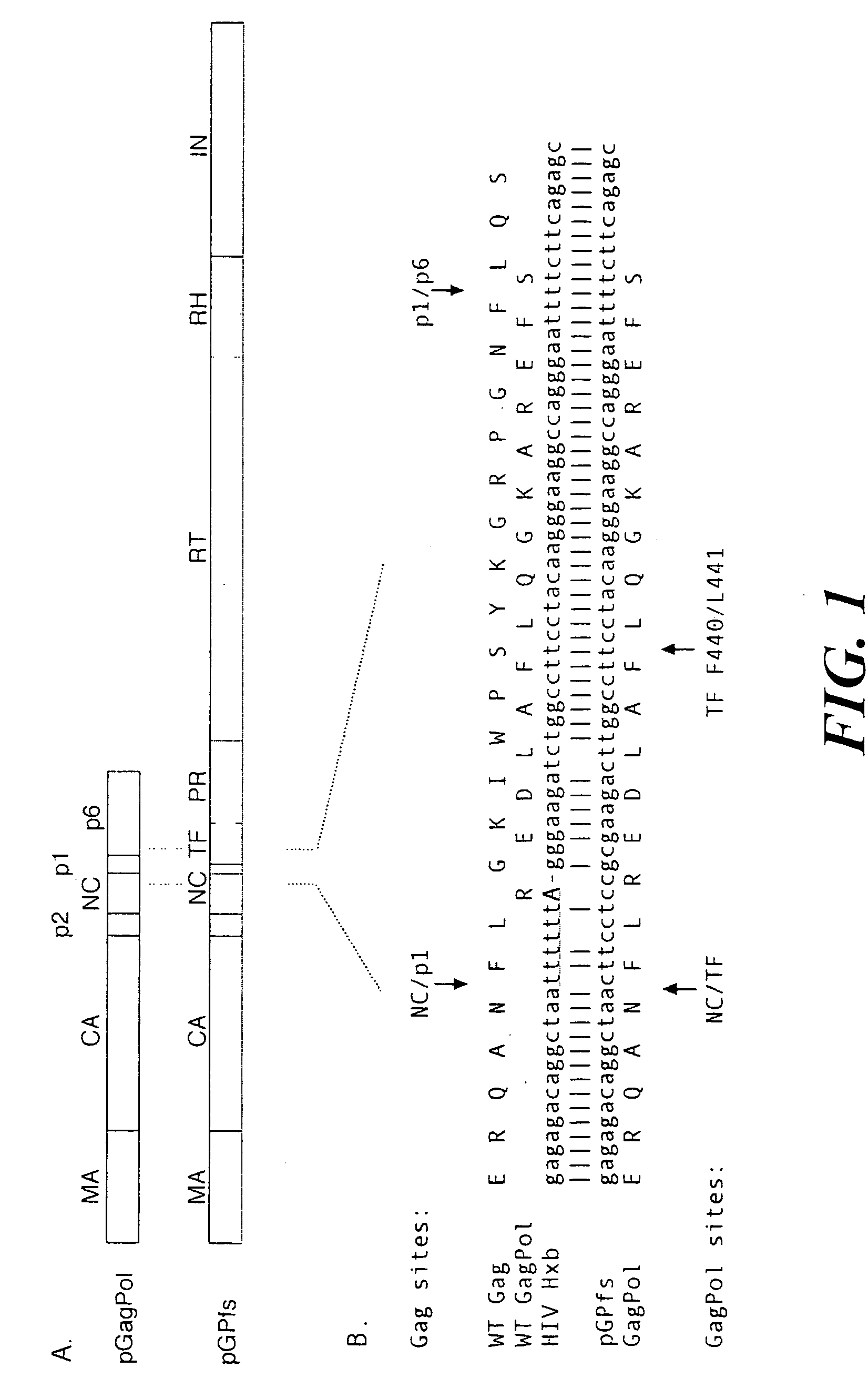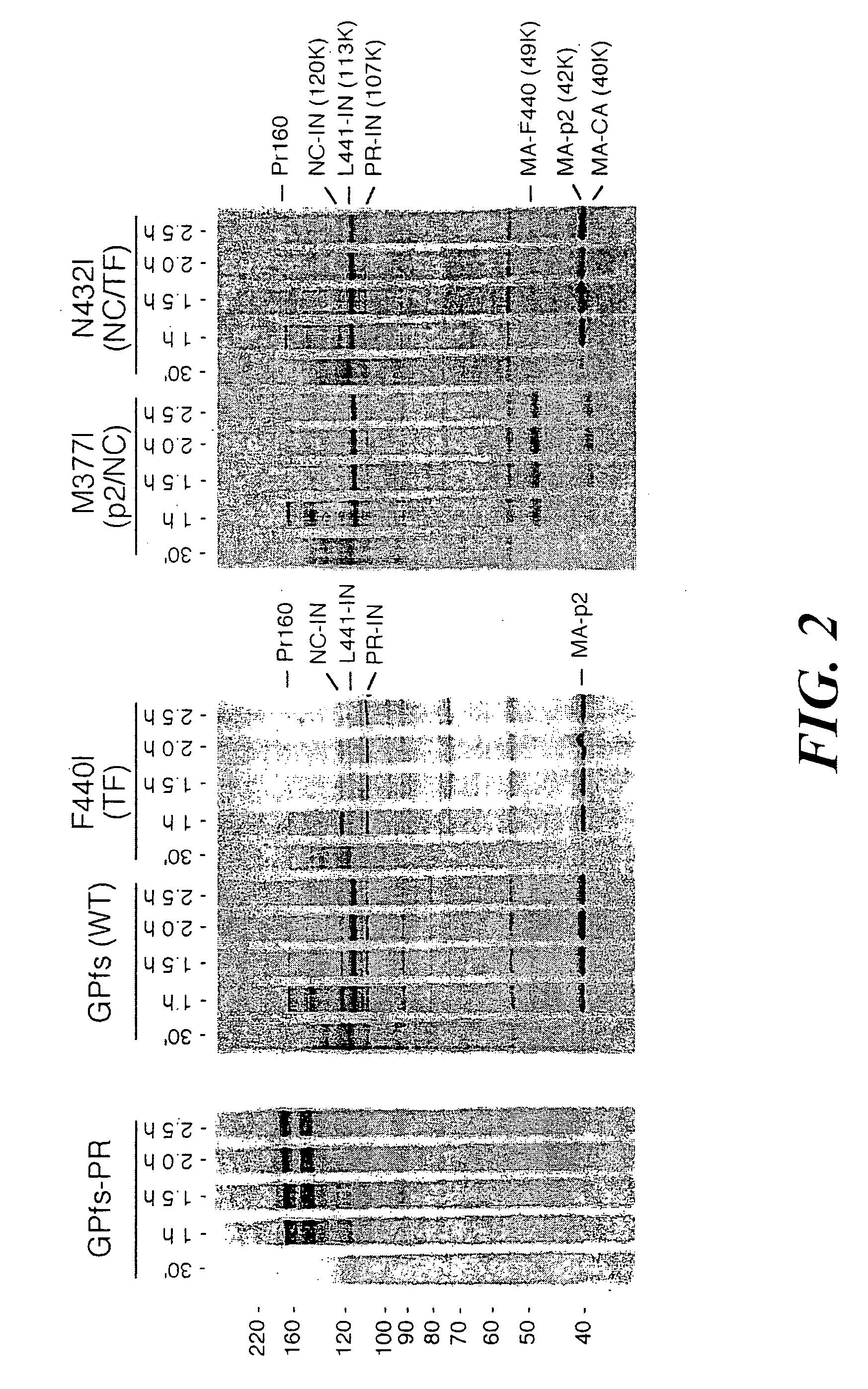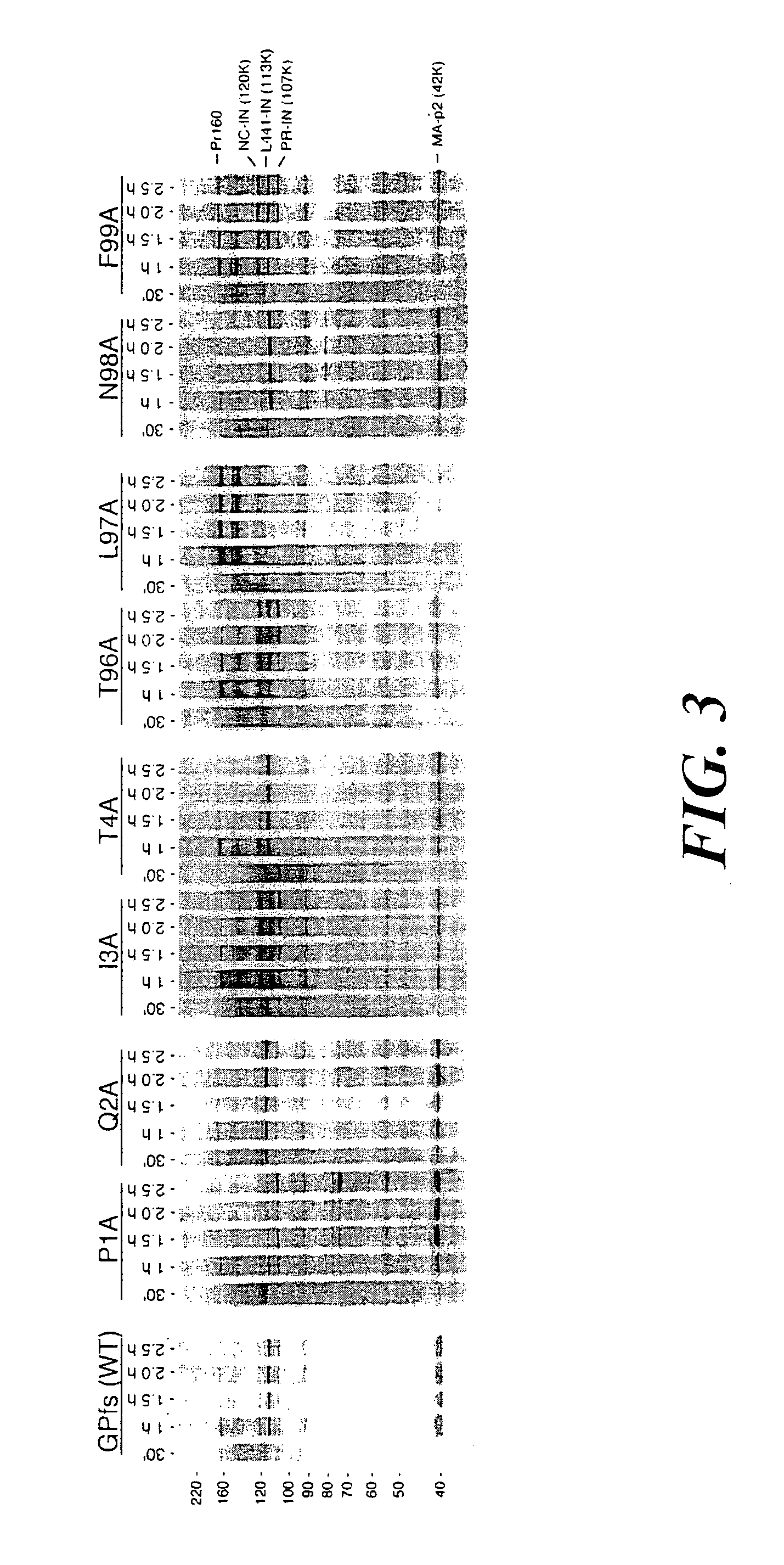Methods and reagents for identifying inhibitors of viral protease activity
a protease activity and inhibitor technology, applied in the field of methods and reagents for identifying compounds, can solve the problems of little information about the structure of the immature protease dimer, little is known about the changes, and the contribution of assembly domains outside the protease to enzyme activation and the mechanism by which enzyme activation is controlled have not been fully assessed. to achieve the effect of inhibiting retrovirus protease activity
- Summary
- Abstract
- Description
- Claims
- Application Information
AI Technical Summary
Benefits of technology
Problems solved by technology
Method used
Image
Examples
example 1
Materials and Methods—Study 1
Plasmid Construction and Mutagenesis.
[0106] Plasmid pMono expresses wild-type or mutated monomeric protease from the tac promoter (Amann et al. (1983) Gene 25:167-178) in Escherichia coli and was derived from plasmid P1+IQ (Baum et al. (1990) Proc. Natl. Acad. Sci. USA 87:10023-10027). Protease sequences in P1+1Q were replaced by a linker of 5′ XhoI-XbaI-SalI-PstI 3′ to produce p1CVx. Wild-type or mutated protease sequences were obtained from pET-PR by PCR with primers 5′Xho (AATATA-CTCGAG-GAAGGAGATATACAT, SEQ ID NO: 1) and 3′Xba (ATAAAT-TCTAGA-CTTGGGCTGCAGGG, SEQ ID NO: 2) and were inserted into p1CVx to produce pMono. The phagemid pET-PR contains the 99-residue coding domain of the monomeric protease (HXB2 isolate [Ratner et al. (1987) AIDS Res. Hum. Retrovir. 3:57-69]) inserted into the NdeI-BamHI sites of pET24a (Novagen). The Kunkel method using single-stranded templates of pET-PR substituted with uracil was employed for site-directed mutagenesis...
example 2
Results—Study 1
Expression of the GagPol Precursor in vitro Results in Protease Activation and Precursor Cleavage.
[0112] The HIV-1 Gag and Pol coding domains are overlapping; gag encodes the structural genes of the viral core (from the 5′ end: matrix [MA], capsid [CA], p2, nucleocapsid [NC], and p6), and pol encodes viral enzymes, including protease (PR), reverse transcriptase (RT), and integrase (IN) (Orozan and Luftig (1990) Curr. Top. Microbiol. Immunol. 157:153-185). The GagPol precursor is a fusion protein that is translated as the result of a -1 frameshift near the end of the gag gene (Jacks et al. (1988) Nature 331:280-283, Reil et al. (1993) J. Virol. 67:5579-5584).
[0113] To assess the activation of the immature protease in the context of the precursor and to characterize the determinants controlling precursor processing, an HIV-1 GagPol rabbit reticulocyte lysate (RRL) expression system was developed in which the precursor is cleaved by endogenous protease. We introduced...
example 3
Material and Methods—Study 2
Plasmid Construction and Mutagenesis.
[0129] The construction of pGPfs and pGPfs-PR was as described above in Example 1. HIV-1 sequences were derived from an HXB isolate of HIV-1 (accession NC 001802; Ratner et al. (1987) AIDS Res. Hum. Retrovir. 3:57-69). Briefly, pGPfs contains a single GagPol open reading frame downstream of the bacteriophage T7 promoter in vector pIBI20 (International Biotechnologies). PGPfs-PR contains an additional catalytic mutation (D25A) of the protease domain that renders PR inactive. In both plasmids, a continuous GagPol open reading frame was created by site-directed mutagenesis-to reproduce exactly in amino acid sequence the major GagPol product found in virions (Gorelick and Henderson (1994) Part III: Analyses, p. 2-5. In G. Myers and B. Korber and S. Wain-Hobson and K. T. Jeang and L. Henderson and G. Pavlakis (ed.), Human Retroviruses and AIDS. The Los Alamos National Laboratory, Los Alamos, N. Mex., Jacks et al. (1988) ...
PUM
| Property | Measurement | Unit |
|---|---|---|
| pH | aaaaa | aaaaa |
| voltage | aaaaa | aaaaa |
| pH | aaaaa | aaaaa |
Abstract
Description
Claims
Application Information
 Login to View More
Login to View More - R&D
- Intellectual Property
- Life Sciences
- Materials
- Tech Scout
- Unparalleled Data Quality
- Higher Quality Content
- 60% Fewer Hallucinations
Browse by: Latest US Patents, China's latest patents, Technical Efficacy Thesaurus, Application Domain, Technology Topic, Popular Technical Reports.
© 2025 PatSnap. All rights reserved.Legal|Privacy policy|Modern Slavery Act Transparency Statement|Sitemap|About US| Contact US: help@patsnap.com



